
Sunset Crater Volcano National Monument
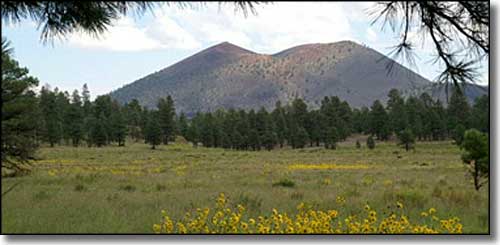
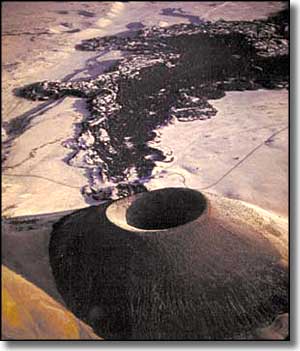
Sunset Crater Volcano was born between 1040 and 1100 AD. The countryside around the volcano had been inhabited by members of the Sinagua culture for hundreds of years before the volcano decided to erupt in their midst. Present-day evidence says that no one died in the eruptions but they got to watch the mountain create itself. The lava flows today look as fresh and rugged as the day they flowed out and solidified.
The Sinagua in the area lived mostly in pithouses, gathered in small groups close to their cornfields. A number of pithouses were burned and filled with cinders, however, excavations have produced no bodies. But imagine being there and watching as ash billowed up high in the sky and black cinders rained down all around. Then forest fires blackened the land and the daytime sky. Nights were filled with the roar of a large fire fountain and the skies glowed red with the heat. Slowly their homes and cornfields were overrun and buried by slow-moving lava flows. Maybe a few years and maybe a generation after the whole thing began, it got quiet again. The ash, the cinders and the lava stopped. But life in the area was changed radically.
After the eruptions stopped, the area around Sunset Crater was no longer usable for farming so the Sinagua left and moved to nearby Walnut Canyon and Wupatki. Although those areas also experienced ash and cinders falling on everything, they found that the thin layers of volcanic material actually helped crops to grow by helping to hold moisture in the soil.
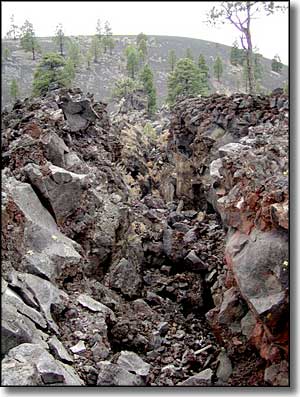
A collapsed lava tube
The Sinagua flourished in the area for another 100 years after the lava flows ceased, but then moved on again. Their descendants can be found among the Zuni, Navajo and Hopi, who all tell stories of the eruptions as part of their oral traditions.
The railroad arrived in the area in the late 1800's, along with mining, logging and ranching. Tourism started shortly after that. Then a Hollywood movie company thought they'd blow up Sunset Crater so they could film a landslide. The public outcry was large and loud, leading to President Herbert Hoover declaring the area a National Monument in 1930. A few years later the CCC arrived to build roads and a visitor center.
Sunset Crater Volcano is in the center of the San Francisco Volcanic Field, surrounded by other cinder cones, several lava domes and one stratovolcano: the San Francisco Peaks. Sunset Crater is the youngest volcano on the Colorado Plateau and the youngest of 600 cinder cones in northern Arizona. In all, about 1 billion tons of material were ejected through the cinder cone and through two vents at its base that flowed lava to the northeast and to the northwest. At the peak of Sunset Crater's eruption, at least 9 smaller cinder cones, several smaller spatter cones and fumaroles were spewing material simultaneously along a 6-mile long fissure. We can see similar "curtain-of-fire" eruptions going on in Hawaii today.
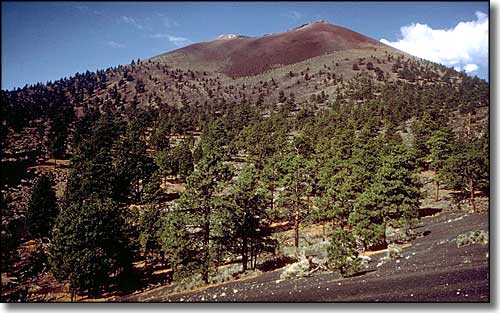
Trees growing in the cinders
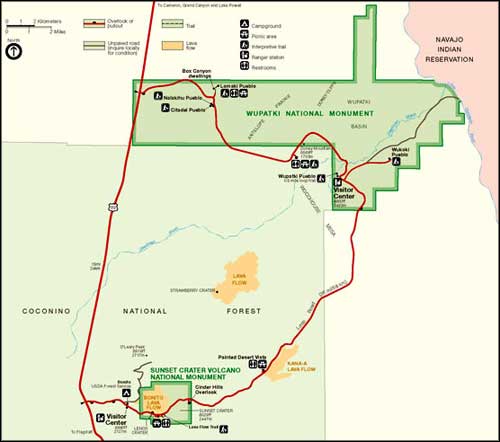
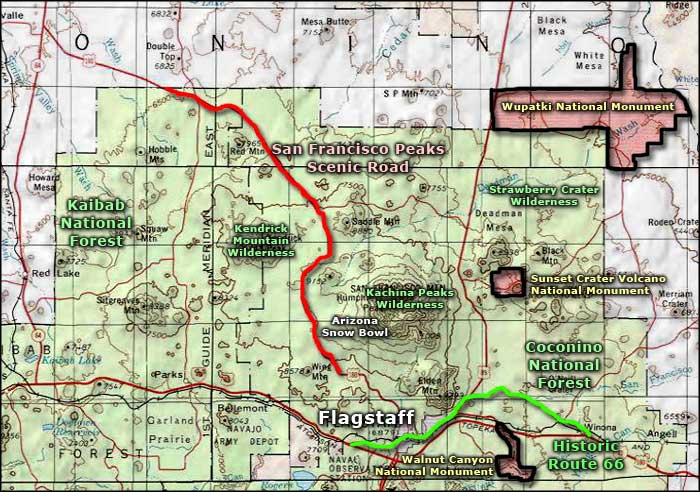
Sunset Crater Volcano National Monument area map
